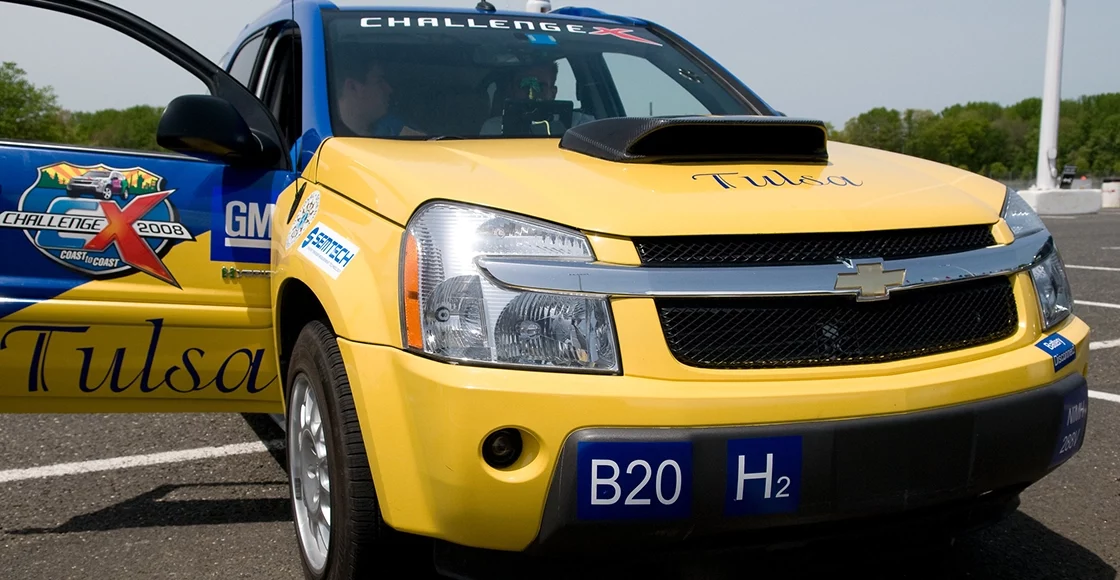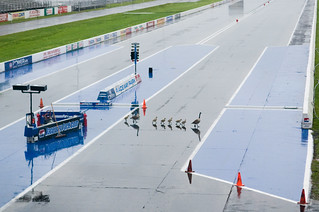ChallengeX
Background
In the first decade of the new millennium, the American automotive customer market trended toward larger family-sized vehicles. At the same time, an increased need to reduce energy consumption, as well as decreased vehicle emissions, was becoming imperative. As a result, the automotive and electronics industries, the U.S. and Canadian governments, and the academic community worked together to launch Challenge X: Crossover to Sustainable Mobility.
The groundbreaking four-year competition (2004-2008) gave 17 universities in North America an opportunity to participate in hands-on research and development with leading-edge automotive propulsion, fuels, materials, and emissions-control technologies.
During the competition, students were challenged to re-engineer a 2005 Chevrolet Equinox to minimize energy consumption, emissions, and greenhouse gases while maintaining or exceeding the stock vehicle’s utility and performance. Using a development process modeled after GM’s Vehicle Development Process, teams gained valuable experience in real-world engineering practices. Participating teams were provided with a variety of resources to help achieve their objectives, including technical support and mentoring from General Motors and other sponsors. Each team also received $10,000 in seed money and were eligible to receive additional production parts, software, and hardware from competition-level sponsors.
Year One (2004-2005) focused on modeling, simulation, and testing of the advanced powertrain and vehicle subsystems selected by each school. Students used computer-based math modeling tools to objectively compare and select the advanced technologies to be used for their overall design. Teams also developed and used rapid prototyping and hardware-in-the-loop (HIL) tools to validate their models and control systems. The Year One competition was held at GM University and GM’s Milford Proving Grounds, where teams showcased their design efforts.
During Year Two (2005-2006), teams developed and integrated their advanced powertrain and subsystems into the donated vehicle. This year was often dubbed the ‘mule’ vehicle build year since teams had to get to a 65% buy-off stage. The year-end competition was held at General Motors Desert Proving Grounds in Mesa, Arizona and featured an extensive set of vehicle dynamic events including braking, handling, acceleration, fuel economy, drive quality, and trailer towing performance. Teams were also judged through technical design presentations and written reports.
In Year Three (2006-2007), teams had to refine their advanced vehicles into a showroom-ready vehicle. At the end of the academic year, teams traveled to General Motors Milford Proving Grounds in Milford, Michigan for dynamic vehicle testing. Much like in Year Two, teams had the chance to compete in several dynamic events like braking, accelerating, dynamic handling, and drive quality. The awards ceremony was held at General Motors Renaissance Center in downtown Detroit, Michigan.
The fourth and final year of Challenge X (2007-2008) featured additional refinement, as well as expansive outreach and media efforts throughout the community. The year began with a road rally through Los Angeles and a ride and drive at the Electric Vehicle Symposium 23 in Anaheim, CA in November 2007. In addition, teams showed off their vehicles to Jay Leno at his garage in Burbank, CA. Teams then had several months to refine their vehicle before taking part in vehicle testing at the Old Bridge Township Raceway in Englishtown, New Jersey in May 2008. After testing, teams began a three-day East Coast Road Rally, which began in New York City with a media event. Teams then made a stop in Baltimore for an education day, and then concluded at the U.S. Department of Energy in Washington, D.C.
Throughout the four years, students developed a strong understanding of advanced vehicle technologies that prepare them to become highly skilled engineers in the automotive industry and remain competitive in the global marketplace.
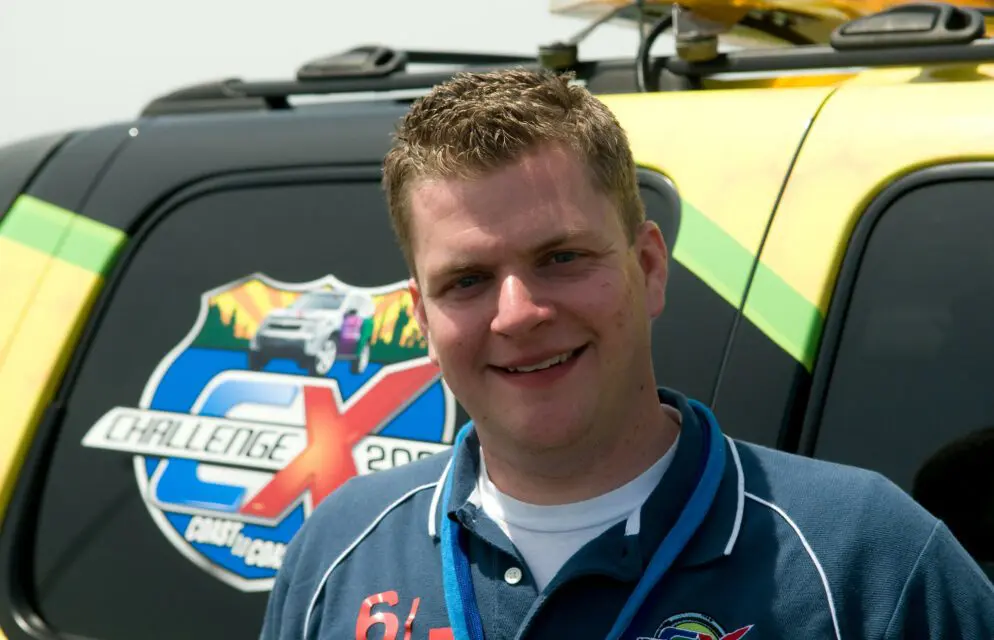
Challenge X
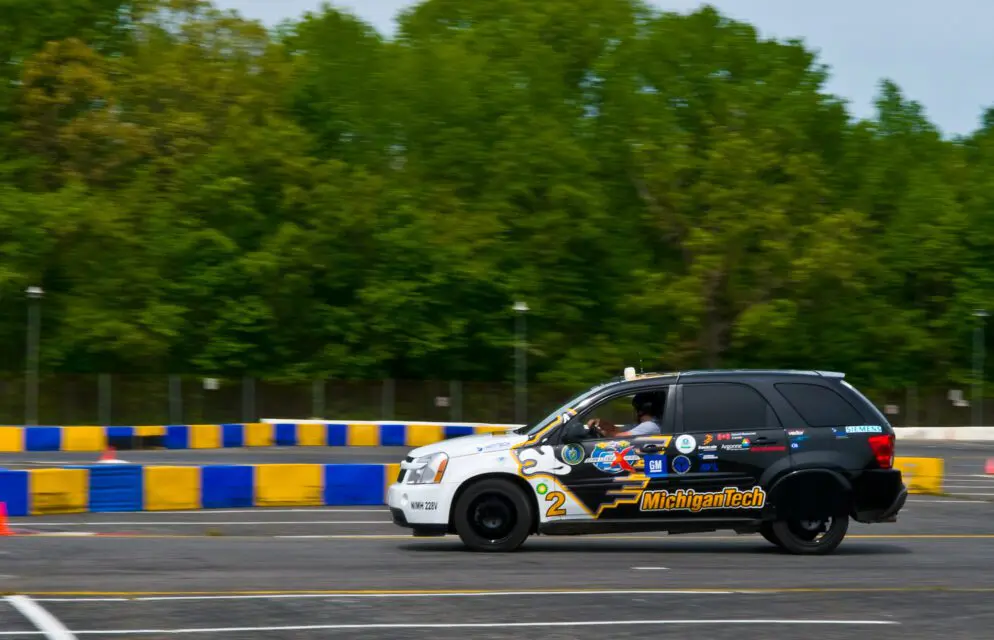
Challenge X
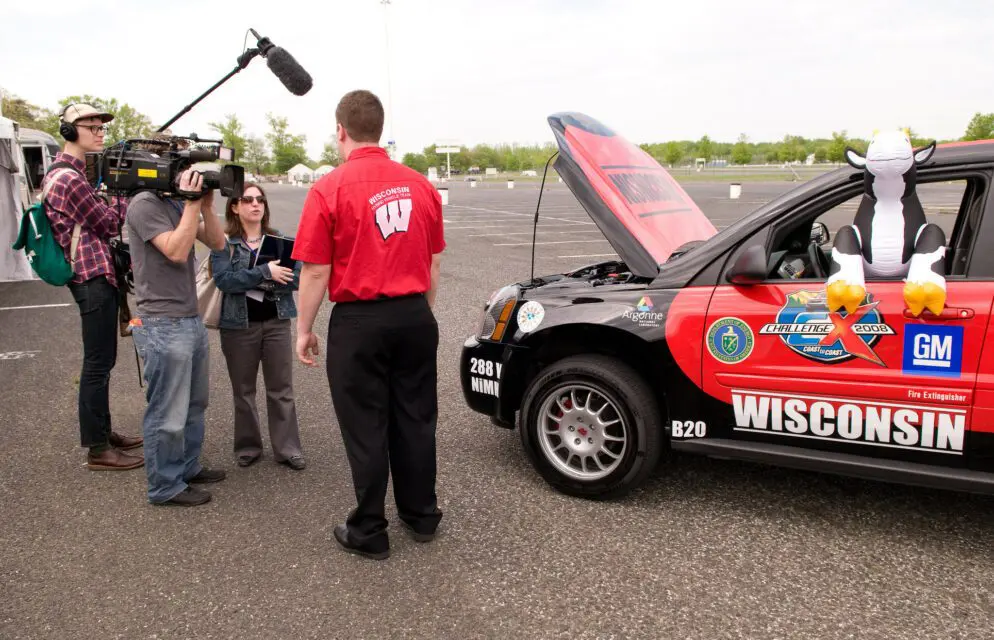
Challenge X
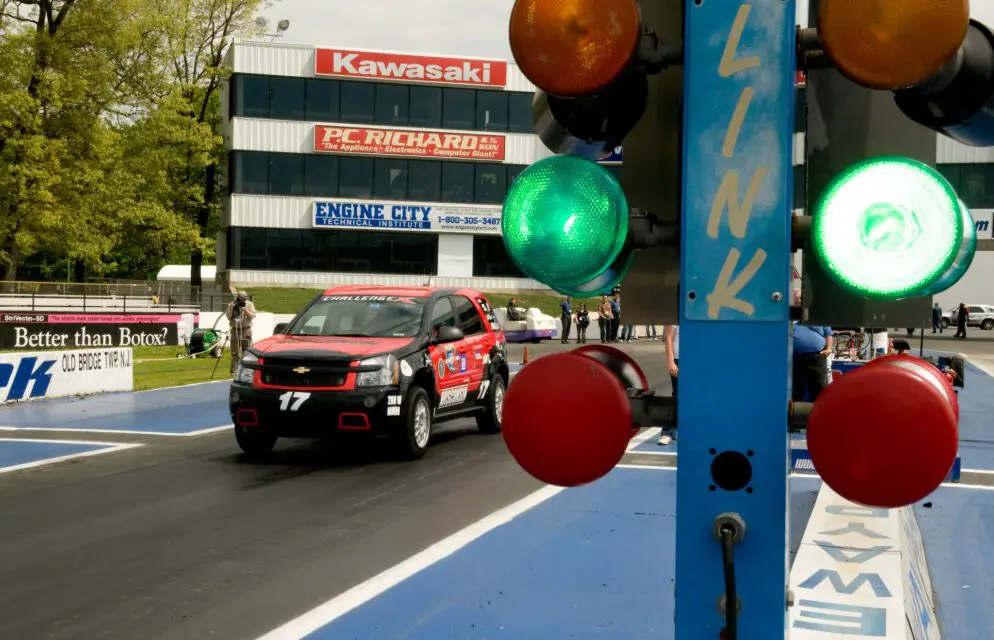
Challenge X
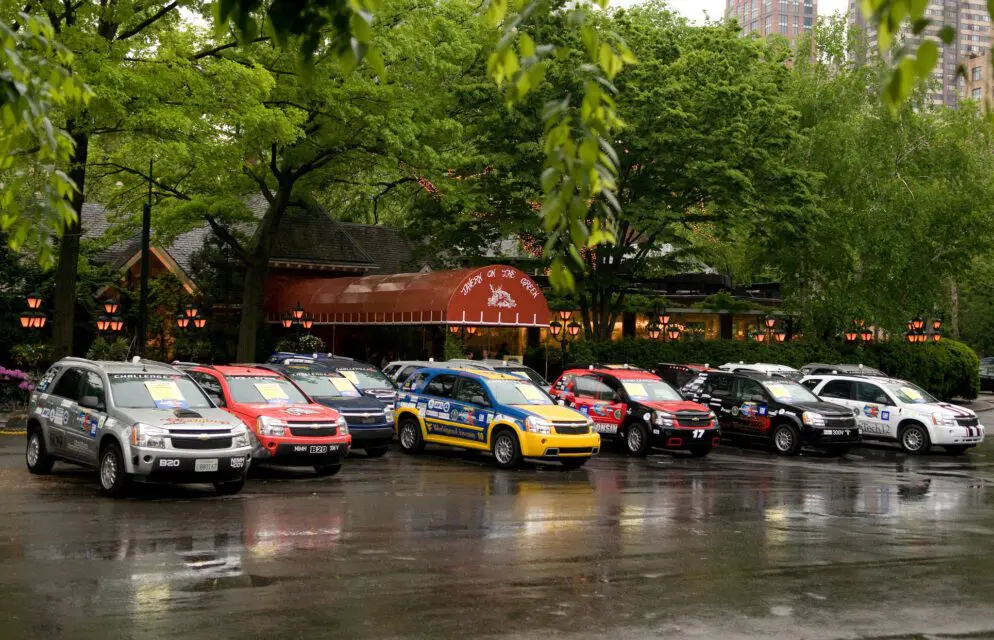
Challenge X
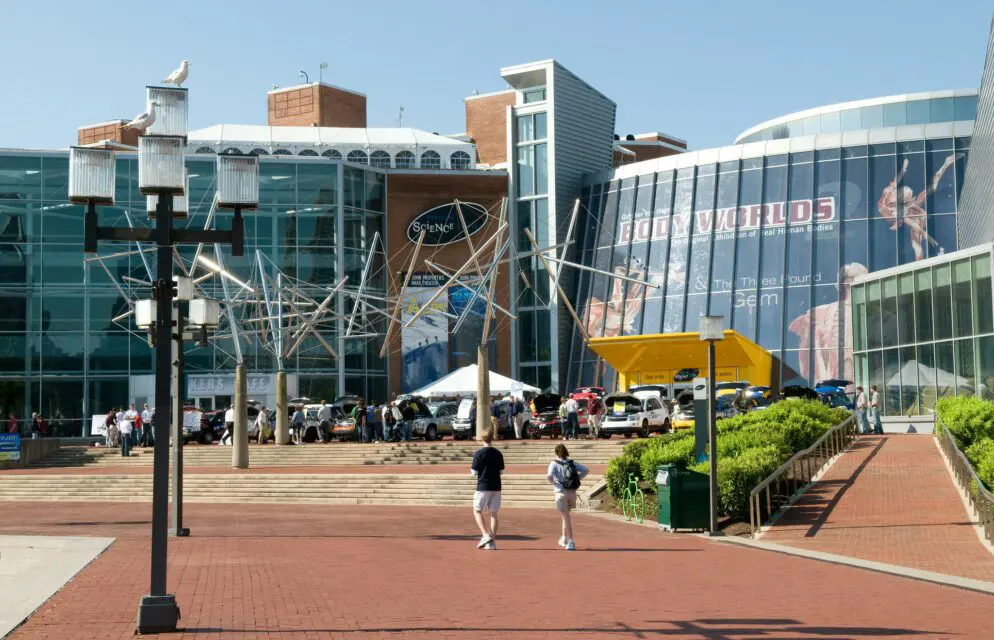
Challenge X
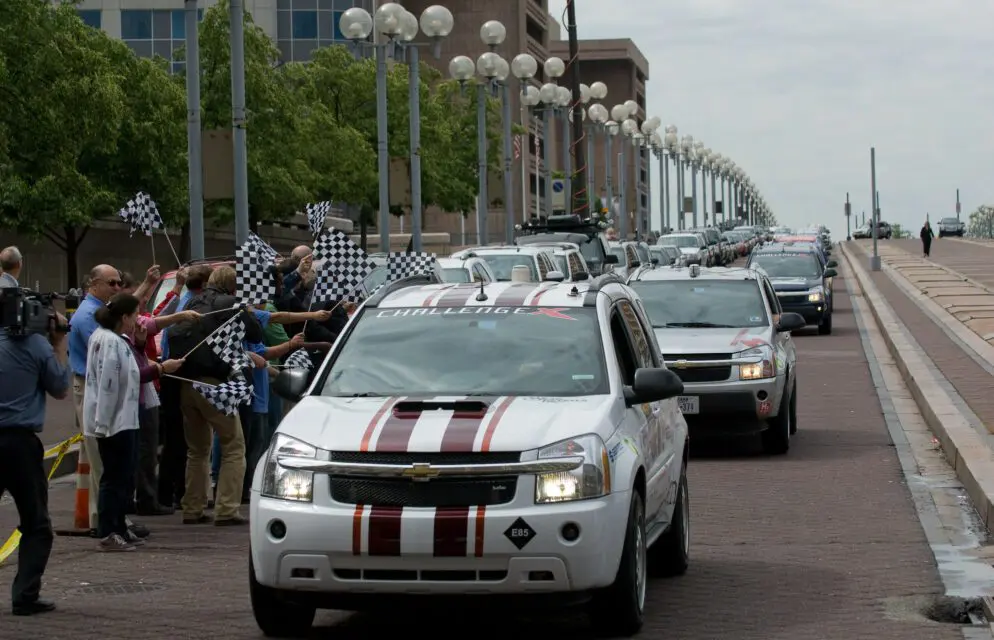
Challenge X
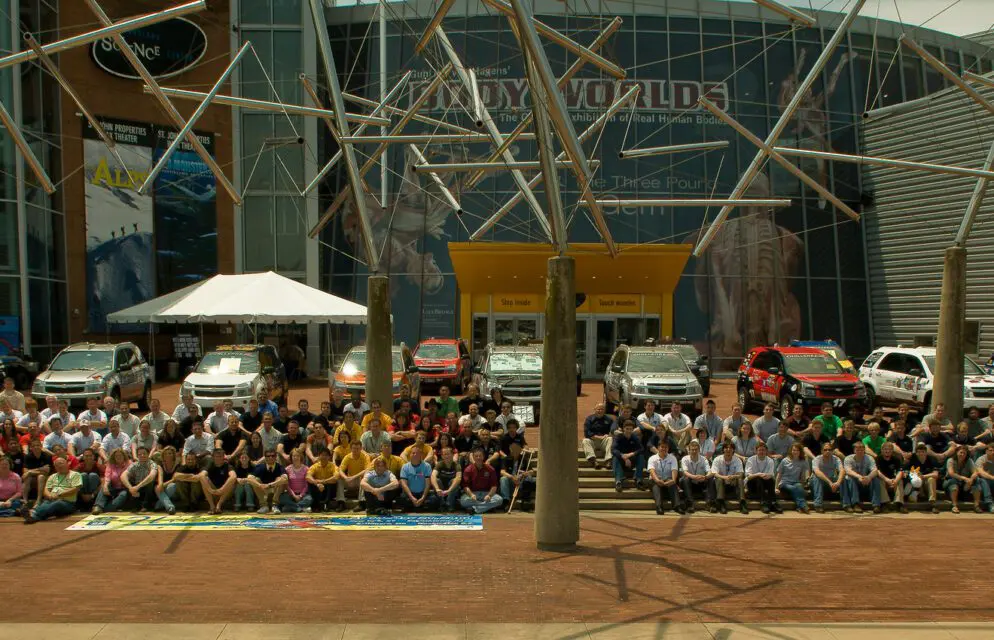
Challenge X
Inovations & Hightlights
The teams in Challenge X employed many novel ideas, approaches, and technologies that (1) provided near-term and long-term solutions to significantly reduce well-to-wheel energy consumption, (2) reduce petroleum energy consumption and emissions, (3) significantly reduce criteria tailpipe and GHG emissions, and (4) increase pump-to-wheel fuel economy. All of the teams selected hybrid vehicle designs for their student-modified vehicles, spanning the gamut of parallel, through-the-road, and series hybrid electric vehicle. These vehicles employed state-of-the-art nickel metal-hydride and lithium-ion battery packs. A variety of advanced electric drive systems employed by the teams enabled the hybrid electric vehicle features, such as regenerative braking, high-load electric assist, and engine transient smoothing.
Engine selections were dominated by highly efficient diesels and turbocharged spark-ignited engines operating on biofuels such as ethanol and biodiesel. More advanced engines, such as highly diluted and boosted spark-ignition engines and hydrogen-assisted ultra-lean burn combustion strategies were also used.
- Five teams included the use of hydrogen as a second fuel.
- The University of California at Davis was the only team to use plug-in hybrid technology for the energy source for its Challenge X vehicle.
- One team, the University of Waterloo, employed a fuel cell as its primary propulsion system.
- West Virginia University and the University of Akron used ultracapacitors to source high levels of power for short periods of time and recapture energy from braking.
- Several teams used the auxiliary power units from fuel cells to power air conditioning and other parasitic loads to aid in HEV propulsion.
- Mississippi State University had a 48% improvement in fuel economy in Year Two.
- Five teams, including Ohio State University and Virginia Tech, used belt alternator/starter technology for an electric performance assist in their vehicles.
- University of Waterloo posted zero emissions in Year Four.
- Utilizing Argonne National Laboratory’s GREET model, University of Wisconsin-Madison team demonstrated a 52% reduction in GHG emissions relative to production counterpart in 2007.
- In Year Two, Virginia Tech achieved the lowest well-to-wheel petroleum energy usage, reducing its vehicle’s petroleum use by 77%.
- Fourteen of the 17 vehicles were able to reduce greenhouse gas emissions in Year Two.
- In Year Three, Penn State achieved 0.06 g/mi NOx emissions utilizing a downsized diesel engine and a Urea injection system (< Tier 2 Bin 5).
- In 2008, Mississippi State University’s ¼ mile acceleration time was 1.6 seconds less than the production vehicle.
- University of Waterloo competed successfully in every event as a fully functional fuel cell vehicle – a first for a fuel cell vehicle in advanced technology vehicle competitions.
- The first ‘Outstanding Women in Engineering’ award was introduced in 2006.
- University of Tulsa decreased well-to-wheel greenhouse gases by 41% in 2008.
- 15 vehicles completed the 328 mile Road Rally in Year Four.
- During the final year, Texas Tech achieved a 74% reduction in Petroleum Energy Use
- The University of Texas at Austin was one of the first teams to include MP3 and GPS connectivity into their student-designed vehicle in 2008.
Universities Involved
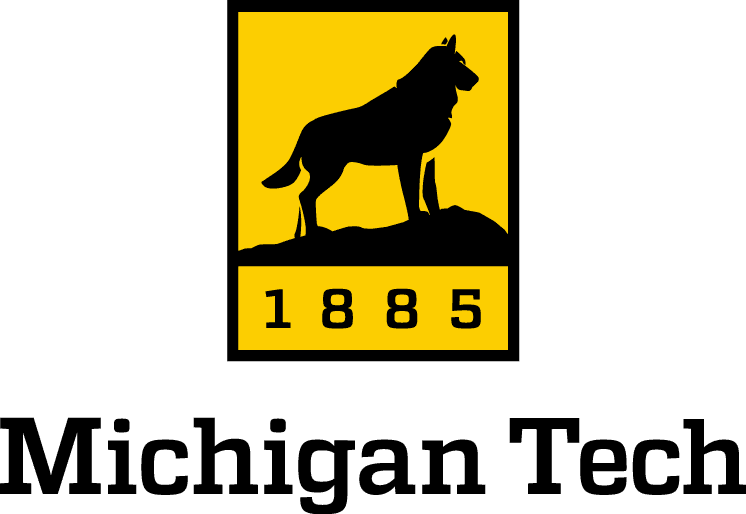
Michigan Technological University
Location
Houghton, MichiganVehicle Design
Lorem ipsum dolor sit amet, consectetur adipisicing elit. Sit voluptates vero possimus enim non dicta aliquid veniam atque molestias, repellat cum unde vel sequi dolor at facilis corporis. Et, molestias labore quidem id impedit repellendus!Faculty Advisors
- John Beard

Mississippi State University
Location
Starkville, MississippiVehicle Design
Lorem ipsum dolor sit amet, consectetur adipisicing elit. Sit voluptates vero possimus enim non dicta aliquid veniam atque molestias, repellat cum unde vel sequi dolor at facilis corporis. Et, molestias labore quidem id impedit repellendus!Faculty Advisors
- Dr. Marshall Molen
- Mark Horstemeyer
- Michael Mazzola
- Mark Zappi
- Vince Duffy
- Bob Kirkland
- Zach Rowland
- Hossein Toghiani
- Bill Jones

Ohio State University
Location
Columbus, OhioVehicle Design
Lorem ipsum dolor sit amet, consectetur adipisicing elit. Sit voluptates vero possimus enim non dicta aliquid veniam atque molestias, repellat cum unde vel sequi dolor at facilis corporis. Et, molestias labore quidem id impedit repellendus!Faculty Advisors
- Dr. Giorgio Rizzoni
- Dr. Frank Ohlemacher
- Dr. Shawn Midlam-Mohler
- Ahmed Solima

Pennsylvania State University
Location
University Park, PennsylvaniaVehicle Design
Lorem ipsum dolor sit amet, consectetur adipisicing elit. Sit voluptates vero possimus enim non dicta aliquid veniam atque molestias, repellat cum unde vel sequi dolor at facilis corporis. Et, molestias labore quidem id impedit repellendus!Faculty Advisors
- Dr. Daniel Haworth
- Gary Neal
- Sal Riggio
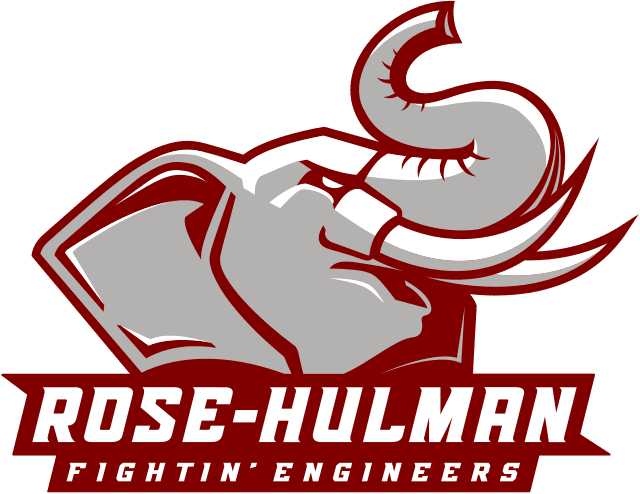
Rose-Hulman Institute of Technology
Location
Terre Haute, IndianaVehicle Design
Lorem ipsum dolor sit amet, consectetur adipisicing elit. Sit voluptates vero possimus enim non dicta aliquid veniam atque molestias, repellat cum unde vel sequi dolor at facilis corporis. Et, molestias labore quidem id impedit repellendus!Faculty Advisors
- Dr. Zac Chambers
- Dr. Marc Herniter
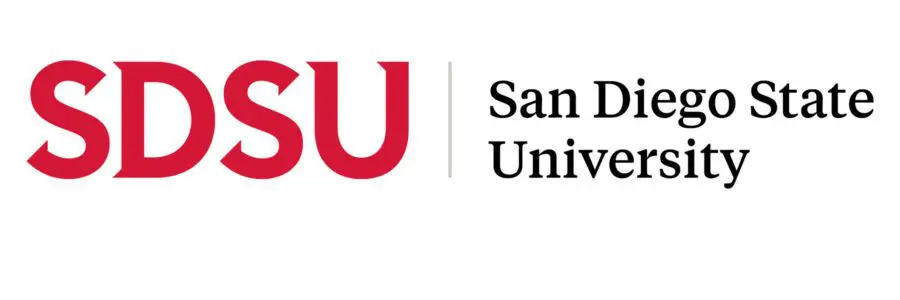
San Diego State University
Location
San Diego, CaliforniaVehicle Design
Lorem ipsum dolor sit amet, consectetur adipisicing elit. Sit voluptates vero possimus enim non dicta aliquid veniam atque molestias, repellat cum unde vel sequi dolor at facilis corporis. Et, molestias labore quidem id impedit repellendus!Faculty Advisors
- Dr. Jim Burns
- Dr. Michael Belch
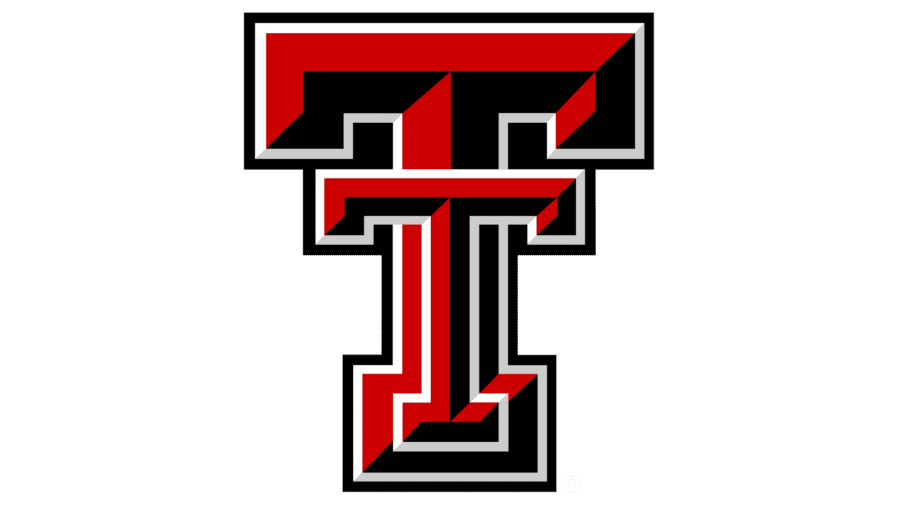
Texas Tech University
Location
Lubbock, TexasVehicle Design
Lorem ipsum dolor sit amet, consectetur adipisicing elit. Sit voluptates vero possimus enim non dicta aliquid veniam atque molestias, repellat cum unde vel sequi dolor at facilis corporis. Et, molestias labore quidem id impedit repellendus!Faculty Advisors
- Dr. Tim Maxwell
- Dr. Michael Parten
- Dr. Dean Fontenot
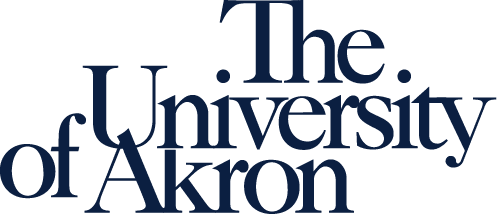
University of Akron
Location
Akron, OhioVehicle Design
Lorem ipsum dolor sit amet, consectetur adipisicing elit. Sit voluptates vero possimus enim non dicta aliquid veniam atque molestias, repellat cum unde vel sequi dolor at facilis corporis. Et, molestias labore quidem id impedit repellendus!Faculty Advisors
- Dr. Iqbal Husain
- Dr. Richard Gross
- Alex De Abreu Garcia
- Jon Gerhardt
- Dr. Robert Veillette
- Tom Hartley
- Dr. Joan Carletta
- Dr. Jerry Drummond

University of California, Davis
Location
Davis, CalifoniaVehicle Design
Lorem ipsum dolor sit amet, consectetur adipisicing elit. Sit voluptates vero possimus enim non dicta aliquid veniam atque molestias, repellat cum unde vel sequi dolor at facilis corporis. Et, molestias labore quidem id impedit repellendus!Faculty Advisors
- Dr. Andrew Frank
- Dr. Paul Erickson
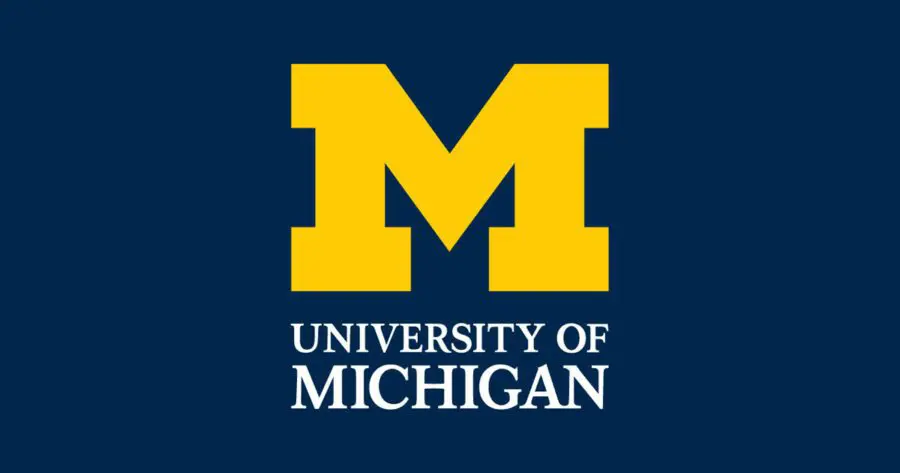
University of Michigan, Ann Arbor
Location
Ann Arbor, MichiganVehicle Design
Lorem ipsum dolor sit amet, consectetur adipisicing elit. Sit voluptates vero possimus enim non dicta aliquid veniam atque molestias, repellat cum unde vel sequi dolor at facilis corporis. Et, molestias labore quidem id impedit repellendus!Faculty Advisors
- Keshav Varde
- Tariq Shamim
- Albert Shih
- Dr. Bruno Vanzieleghem
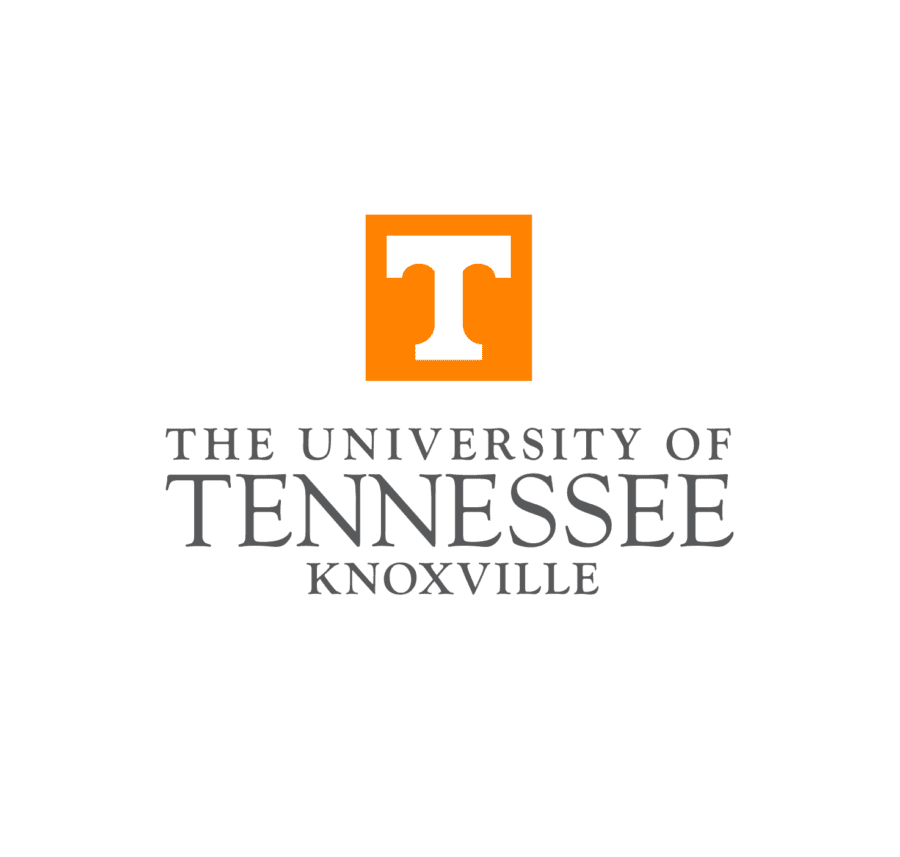
University of Tennessee, Knoxville
Location
Knoxville, TennesseeVehicle Design
Lorem ipsum dolor sit amet, consectetur adipisicing elit. Sit voluptates vero possimus enim non dicta aliquid veniam atque molestias, repellat cum unde vel sequi dolor at facilis corporis. Et, molestias labore quidem id impedit repellendus!Faculty Advisors
- Dr. David Irick
- Jonathan Overly

University of Texas, Austin
Location
Austin, TexasVehicle Design
Lorem ipsum dolor sit amet, consectetur adipisicing elit. Sit voluptates vero possimus enim non dicta aliquid veniam atque molestias, repellat cum unde vel sequi dolor at facilis corporis. Et, molestias labore quidem id impedit repellendus!Faculty Advisors
- Dr. Ronald Matthews
- Dr. Matthew Hall
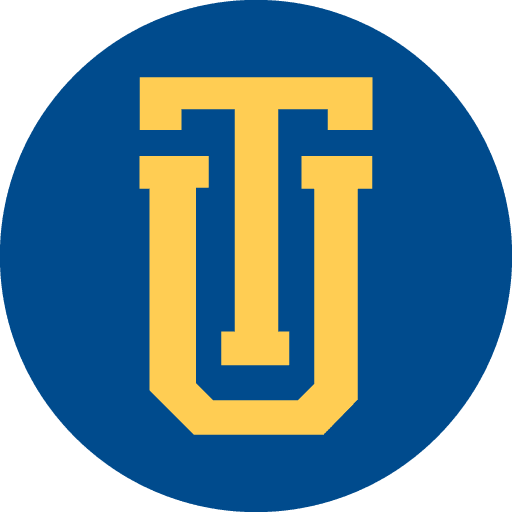
University of Tulsa
Location
Los Angeles, CalifoniaVehicle Design
Lorem ipsum dolor sit amet, consectetur adipisicing elit. Sit voluptates vero possimus enim non dicta aliquid veniam atque molestias, repellat cum unde vel sequi dolor at facilis corporis. Et, molestias labore quidem id impedit repellendus!Faculty Advisors
- Dr. Christi Patton Luks
- Dr. Daniel Crunkleton
- Douglas Jussaume
- Dr. John Henshaw
- Dr. Robert Strattan
- Matthew Roberds

University of Waterloo
Location
Ontario, CanadaVehicle Design
Lorem ipsum dolor sit amet, consectetur adipisicing elit. Sit voluptates vero possimus enim non dicta aliquid veniam atque molestias, repellat cum unde vel sequi dolor at facilis corporis. Et, molestias labore quidem id impedit repellendus!Faculty Advisors
- Dr. Roydon Fraser
- Dr. Michael Fowler
- Dr. Steve Lambert
- Dr. Mehrdad Kazerani
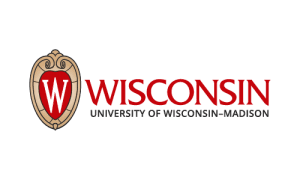
University of Wisconsin, Madison
Location
Madison, WisconsinVehicle Design
Lorem ipsum dolor sit amet, consectetur adipisicing elit. Sit voluptates vero possimus enim non dicta aliquid veniam atque molestias, repellat cum unde vel sequi dolor at facilis corporis. Et, molestias labore quidem id impedit repellendus!Faculty Advisors
- Dr. Glenn Bower
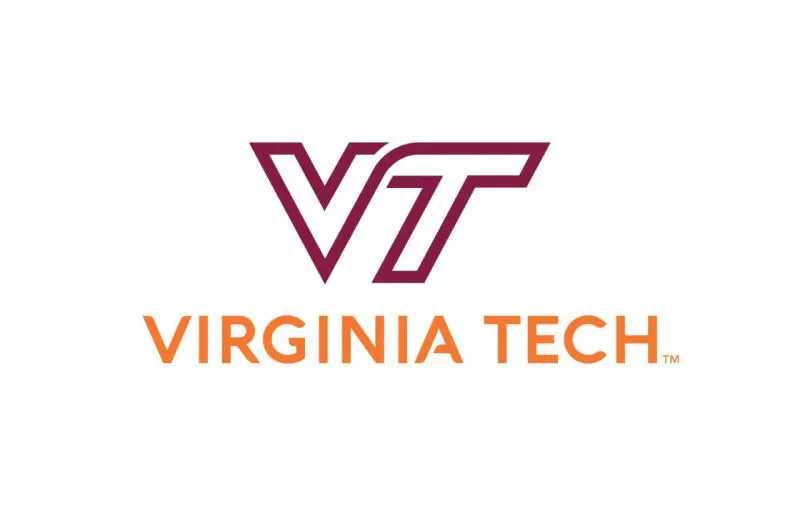
Virginia Tech
Location
Blacksburg, VirginiaVehicle Design
Lorem ipsum dolor sit amet, consectetur adipisicing elit. Sit voluptates vero possimus enim non dicta aliquid veniam atque molestias, repellat cum unde vel sequi dolor at facilis corporis. Et, molestias labore quidem id impedit repellendus!Faculty Advisors
- Dr. Doug Nelson

West Virginia University
Location
Morgantown, West VirginiaVehicle Design
Lorem ipsum dolor sit amet, consectetur adipisicing elit. Sit voluptates vero possimus enim non dicta aliquid veniam atque molestias, repellat cum unde vel sequi dolor at facilis corporis. Et, molestias labore quidem id impedit repellendus!Faculty Advisors
- Dr. Nigel Clark
- Casaba Toth-Nagy
- Dr. Scott Wayne
Winners & Awards
Each year, university teams compete in a variety of static and dynamic events that range from oral presentations to on-road vehicle testing to communication and business tactics. These static and dynamic events are judged by industry sponsors and professionals, both throughout the year and in-person at the year-end competition.
Year One 2004-2005
- 1st Place – University of Waterloo
- 2nd Place – University of Akron
- 3rd Place – Ohio State University
- 4th Place – Virginia Tech
- 5th Place – Pennsylvania State University
- 6th Place – Texas Tech
- Best Written Reports, 1st Place – University of Akron
- Best Written Reports, 2nd Place – Virginia Tech
- Best Written Reports, 3rd Place – University of Waterloo
- Best Technical Presentation – University of Waterloo
- Best Control Strategy Presentation – University of Waterloo
- Best Project Initiation Approval Presentation, 1st Place – University of Waterloo
- Best Project Initiation Approval Presentation, 2nd Place – Mississippi State University
- Best Project Initiation Approval Presentation, 3rd Place – University of Akron
- The Mathworks Crossover to Model Based Design, 1st Place – University of Waterloo
- The Mathworks Crossover to Model Based Design, 2nd Place – Rose-Hulman Inst. of Technology
- The Mathworks Crossover to Model Based Design, 3rd Place – Texas Tech
- National Instruments Most Innovative Use of Virtual Instrumentation for Control Design and Simulation, 1st Place – Texas Tech
- National Instruments Most Innovative Use of Virtual Instrumentation for Control Design and Simulation, 2nd Place – University of Tennessee, Knoxville
- National Instruments Most Innovative Use of Virtual Instrumentation for Control Design and Simulation, 3rd Place – University of Waterloo
- Freescale Semiconductor Silicon on the Move, 1st Place – University of Waterloo
- Freescale Semiconductor Silicon on the Move, 2nd Place – Ohio State University
- Freescale Semiconductor Silicon on the Move, 3rd Place – University of Wisconsin-Madison
- Outstanding Outreach, 1st Place (tie) – University of Waterloo and Mississippi State University
- Outstanding Outreach, 3rd Place – University of Akron
- Outstanding Educational Outreach – University of Akron
- Outstanding Community/Media Outreach – Mississippi State University
- Outstanding Website – University of Waterloo
- National Science Foundation Outstanding Incoming Faculty Advisor Award – Dr. Christi Patton Luks, University of Tulsa
- National Science Foundation Outstanding Long-Term Faculty Advisor Award – Dr. Douglas Nelson, Virginia Tech
Year Two 2005-2006
- 1st Place – Virginia Tech
- 2nd Place – University of Wisconsin – Madison
- 3rd Place – Mississippi State University
- 4th Place – Ohio State University
- 5th Place – Penn State University
- 6th Place – University of Tennessee, Knoxville
- Best Written Technical Reports, 1st Place – Virginia Tech
- Best Written Technical Reports, 2nd Place – Ohio State University
- Best Written Technical Reports, 3rd Place – University of Wisconsin – Madison
- Lowest Time Braking and Handling (Dynamic Handling) – Virginia Tech
- Best Acceleration – University of Wisconsin – Madison
- Best AVL DRIVE Quality – Mississippi State University
- Lowest Regulated Tailpipe Emissions – Virginia Tech
- Lowest Well-to-Wheels Greenhouse Gas Emissions – Mississippi State University
- Best On-Road Energy Use – Mississippi State University
- Lowest Well-to-Wheels Petroleum Energy Usage – Virginia Tech
- Best Technical Presentation – University of Wisconsin – Madison
- Best Vehicle Development Review – University of Wisconsin – Madison
- Best Control Strategy Presentation – University of Waterloo
- Best Realization of VTS, 1st Place – Mississippi State University
- Best Realization of VTS, 2nd Place – Ohio State University
- Best Realization of VTS, 3rd Place (tie) – University of Wisconsin-Madison and Virginia Tech
- Outstanding Outreach, 1st Place – University of Waterloo
- Outstanding Outreach, 2nd Place – Mississippi State University
- Outstanding Outreach, 3rd Place (tie)- University of Akron and Ohio State University
- Most Improved Outreach Program – University of Wisconsin-Madison
- Outstanding Educational Outreach – University of Waterloo
- Outstanding Community Outreach – University of Waterloo
- Outstanding PR/Media Outreach – Mississippi State University
- Outstanding Website – University of Waterloo
- Dr. Donald Streit Sportsmanship Award – University of Wisconsin-Madison
- Best Engineering & Fabrication Workmanship – University of Wisconsin-Madison
- Spirit of the Challenge – University of Waterloo
- Outstanding Team Radar – Angelina Bellino, University of Tulsa
- Most Improved Team (tie) – University of Tennessee, Knoxville and San Diego State University
- National Science Foundation Outstanding Incoming Faculty Advisor Award – Dr. Zac Chambers and Dr. Marc Herniter, Rose-Hulman Institute of Technology
- National Science Foundation Outstanding Long-Term Faculty Advisor Award – Dr. Glenn Bower, University of Wisconsin-Madison
- The Mathworks Crossover to Model Based Design, 1st Place – Ohio State University
- The Mathworks Crossover to Model Based Design, 2nd Place – University of Waterloo
- The Mathworks Crossover to Model Based Design, 3rd Place – University of Akron
- National Instruments Most Innovative Use of Virtual Instrumentation, 1st Place – Virginia Tech
- National Instruments Most Innovative Use of Virtual Instrumentation, 2nd Place – Rose-Hulman Institute of Technology
- National Instruments Most Innovative Use of Virtual Instrumentation, 3rd Place – University of Tulsa
- Freescale Semiconductor Silicon on the Move, 1st Place – University of Wisconsin-Madison
- Freescale Semiconductor Silicon on the Move, 2nd Place – University of Waterloo
- Freescale Semiconductor Silicon on the Move, 3rd Place – Penn State University
- Challenge X Outstanding Women in Engineering Award – Jama Johnson, Rose-Hulman Institute of Technology
- Challenge X Bridging the Gap, Women in Engineering Award – Angelina Bellino, University of Akron
Year Three 2006-2007
- 1st Place – Mississippi State University
- 2nd Place – University of Wisconsin-Madison
- 3rd Place – Virginia Tech
- 4th Place – Ohio State University
- 5th Place – Penn State University
- 6th Place – San Diego State University
- Best Static Consumer Acceptability – Mississippi State University
- Best Dynamic Consumer Acceptability (tie) – Ohio State University and University of Wisconsin-Madison
- Best Control Strategy – University of Wisconsin-Madison
- Best Technical Presentation – University of Wisconsin-Madison
- Best Vehicle Testing Complete Presentation – University of Wisconsin-Madison
- Best Written Technical Report – Virginia Tech
- Best Realization of VDP – Mississippi State University
- Best Acceleration – Mississippi State University
- Best AVL DRIVE Quality (tie) – Mississippi State University and San Diego State University
- Best Traction Control – University of Waterloo
- Best Trailer Tow – University of Wisconsin-Madison
- Best VDTA Handling – University of Wisconsin-Madison
- Best On-Road Energy Use – Mississippi State University
- Lowest Regulated Tailpipe Emissions – University of Waterloo
- Lowest Petroleum Energy Usage – Virginia Tech
- Lowest Well-to-Wheel Greenhouse Gas Emissions – University of Wisconsin-Madison
- Spirit of the Challenge – University of Michigan
- Most Improved Team – University of Waterloo
- Dr. Donald Streit Sportsmanship Award – University of Waterloo
- Best Vehicle Appearance – University of Wisconsin-Madison
- Outstanding Outreach, 1st Place – Mississippi State University
- Outstanding Outreach, 2nd Place – University of Akron
- Outstanding Outreach, 3rd Place – University of Waterloo
- Outstanding PR/Media Outreach – Mississippi State University
- Outstanding Community Outreach – Rose-Hulman Institute of Technology
- Best Sponsored Outreach Event – Ohio State University
- Outstanding Website – University of Akron
- Outstanding Youth Outreach – University of Waterloo
- National Science Foundation Outstanding Incoming Faculty Advisor Award – Dr. Marshall Molen, Mississippi State University
- National Science Foundation Outstanding Long-Term Faculty Advisor Award – Dr. Giorgio Rizzoni, Ohio State University
- The Mathworks Crossover to Model Based Design, 1st Place – Rose-Hulman Institute of Technology
- The Mathworks Crossover to Model Based Design, 2nd Place – Ohio State University
- The Mathworks Crossover to Model Based Design, 3rd Place – University of Waterloo
- National Instruments Most Innovative Use of Virtual Instrumentation, 1st Place – University of Tulsa
- National Instruments Most Innovative Use of Virtual Instrumentation, 2nd Place – University of Waterloo
- National Instruments Most Innovative Use of Virtual Instrumentation, 3rd Place – Rose-Hulman Institute of Technology
- Freescale Semiconductor Silicon on the Move, 1st Place – University of Wisconsin-Madison
- Freescale Semiconductor Silicon on the Move, 2nd Place – Rose-Hulman Institute of Technology
- Freescale Semiconductor Silicon on the Move, 3rd Place – University of Akron
- Challenge X Outstanding Women in Engineering Award – Kristina Lawyer, Rose-Hulman Institute of Technology
Year Four 2007-2008
- 1st Place – Mississippi State University
- 2nd Place – University of Wisconsin-Madison
- 3rd Place – Ohio State University
- 4th Place – University of Waterloo
- 5th Place – University of Tulsa
- 6th Place – Penn State University
- Best Written Technical Report – Ohio State University
- Best ¼ Acceleration – Mississippi State University
- Best Autocross – Penn State University
- Best Static Consumer Acceptability – Mississippi State University
- Best Dynamic Consumer Acceptability – Virginia Tech
- Best Control Strategy – Ohio State University
- Best Technical Presentation – Penn State University
- Best AVL DRIVE Quality – University of Waterloo
- Best On-Road Energy Use – Mississippi State University
- Lowest On-Road Emissions – University of Waterloo
- Lowest Petroleum Energy Usage – University of Waterloo
- Lowest Well-to-Wheel Greenhouse Gas Emissions – Mississippi State University
- Lowest Rally Energy Use – Mississippi State University
- Best Engineering & Fabrication Workmanship – Penn State University
- Spirit of the Challenge – University of California, Davis
- Most Improved Team – University of Texas at Austin
- Dr. Donald Streit Sportsmanship Award – Rose-Hulman Institute of Technology
- Best Vehicle Appearance – Penn State
- Outstanding Outreach, 1st Place – University of Waterloo
- Outstanding Outreach, 2nd Place – Mississippi State University
- Outstanding Outreach, 3rd Place – Ohio State University
- Best Social Outreach – University of Texas at Austin
- Best Innovative Outreach – Mississippi State University
- Special Outreach Recognition – Michigan Technological University
- National Science Foundation Outstanding Incoming Faculty Advisor Award – Gary Neal, Penn State University
- National Science Foundation Outstanding Long-Term Faculty Advisor Award – Dr. Tim Maxwell, Texas Tech University
- Spirit of Education – Dr. David Irick, University of Tennessee, Knoxville
- The Mathworks Crossover to Model Based Design, 1st Place – Ohio State University Rose-Hulman Institute of Technology
- The Mathworks Crossover to Model Based Design, 2nd Place – Rose-Hulman Institute of Technology
- The Mathworks Crossover to Model Based Design, 3rd Place – University of Waterloo
- National Instruments Most Innovative Use of Virtual Instrumentation, 1st Place – Texas Tech University
- National Instruments Most Innovative Use of Virtual Instrumentation, 2nd Place – University of Tulsa
- National Instruments Most Innovative Use of Virtual Instrumentation, 3rd Place – University of Waterloo
- Freescale Semiconductor Silicon on the Move, 1st Place – Rose-Hulman Institute of Technology University of Wisconsin-Madison
- Freescale Semiconductor Silicon on the Move, 2nd Place – University of Wisconsin-Madison
- Freescale Semiconductor Silicon on the Move, 3rd Place – Ohio State
- Lyn St. James Rookie Women in Engineering Award – Jenna Grantham, Mississippi State University
- Lyn St. James Women in Engineering Award – Rebecca Winer, Rose-Hulman Institute of Technology
Sponsors
Below are the list of sponsors who helped make Challenge X possible:
Challenge X Media Coverage
Select a tab above to view content
- 2004 Challenge X Notice of Interest Release
- 2005 Challenge X Winners Press Release
- 2006 Media Report
- 2007 Media Report
- 2008 CX Winner Press Release
- Engineering Students Develop Skills To Propel “Green” Vehicles Into Next Decade And Beyond
- 2009 MotorTrend: Mississippi State University Diesel Electric Hybrid Equinox
- Sustainable SUV Challenge Kicks Off at Freescale – January 14, 2005
- Challenge X projects favor biodiesel – March 1, 2005
- Driving forward: Students create earth-friendly autos – March 15, 2005
- The Virginia Engineer: Challenge X: Crossover to Sustainable Mobility – June 2, 2005
- General Motors donates money for auto challenge – March 31, 2006
- Geotimes: Sustainable Mobility: Hybrid Vehicles Compete – May 2006
- Rose-Hulman Students Unveil Challenge X Vehicle – May 17, 2006
- GM, DOE Team Up to Sponsor ‘Challenge X: Crossover to Sustainable Mobility’ – May 20, 2006
- Virginia Tech Students Win GM And Doe Challenge X 2006 Competition – June 6, 2006
- Penn State Challenge X team fares well at national competition – June 12, 2006
- UWAFT Leads the Way at Challenge X – June 21, 2006
- Student-Built Hybrids Rise To The Challenge X – July 19, 2006
- Team Fate beefing up a GM Equinox with li-ions for Challenge X – Jan 24, 2007
- University students turn a Chevy Equinox into a greener crossover – May 2007
- Mississippi State University Team Wins Challenge X 2007 Competition – June 7, 2007
- Challenge X Competition Generates More Than Winning Team – June 9, 2007
- Winner Of GM/DOE Challenge X Announced – June 10, 2007
- Quantum supports university teams in Challenge X – December 4, 2007
- Freescale Helps Drive Challenge X Collegiate Automotive Engineering Competition to Finish Line – May 1, 2008
- Challenge X 2008: Mississippi State University Wins First Place! – June 2008
- MotorTrend’s Challenge X: Crossover To Sustainable Mobility Video – June 2008
- Hybrid challenge adviser honored – July 2, 2008
- Challenge X: The Last Lap – August 4, 2008
- Use of New Technology in the Challenge X Competition – April 4, 2006
- Vehicle Model Development and Verification Using MathWorks Simulink and National Instruments Virtual Instrumentation – April 4, 2006
- Fuel Cell Hybrid Powertrain Design Approach for a 2005 Chevrolet Equinox – April 4, 2006
- Challenge X Mentoring: A Perspective on an Extraordinary Learning Experience – April 4, 2006
- Design and Development Process for the Equinox REVLSE E85 Hybrid Electric Vehicle – April 4, 2006
- Development of the MTU Automatic Shifting Manual Six Speed Transmission – April 4, 2006
- Multi-Objective Design Optimization Applied to Light Weighting a GM Equinox Rear Cradle – April 16, 2007
- A Simplified Battery Model for Hybrid Vehicle Technology Assessment – April 16, 2007
- Design and Testing of a Prototype Hybrid-Electric Split-Parallel Crossover Sports Utility Vehicle – April 16, 2007
- Control of the Start/Stop of a Diesel Engine in a Parallel HEV with a Belted Starter/Alternator – September 16, 2007
- Cleaner Diesel Using Model-Based Design and Advanced Aftertreatment in a Student Competition Vehicle – April 14, 2008
- Validation, Testing, and Refinement of the Equinox REVLSE E85 Hybrid Electric Vehicle – April 14, 2008
- Combining Passion with Fundamentals – Applying Model-Based Design to Education – April 14, 2008
- University of Waterloo’s Hydrogen Fuel Cell Choice Meets the Reality of Canada’s Winter by Using Model-Based Design – April 14, 2008
- Application of Model-Based Design Techniques for the Control Development and Optimization of a Hybrid-Electric Vehicle – April 20, 2009
